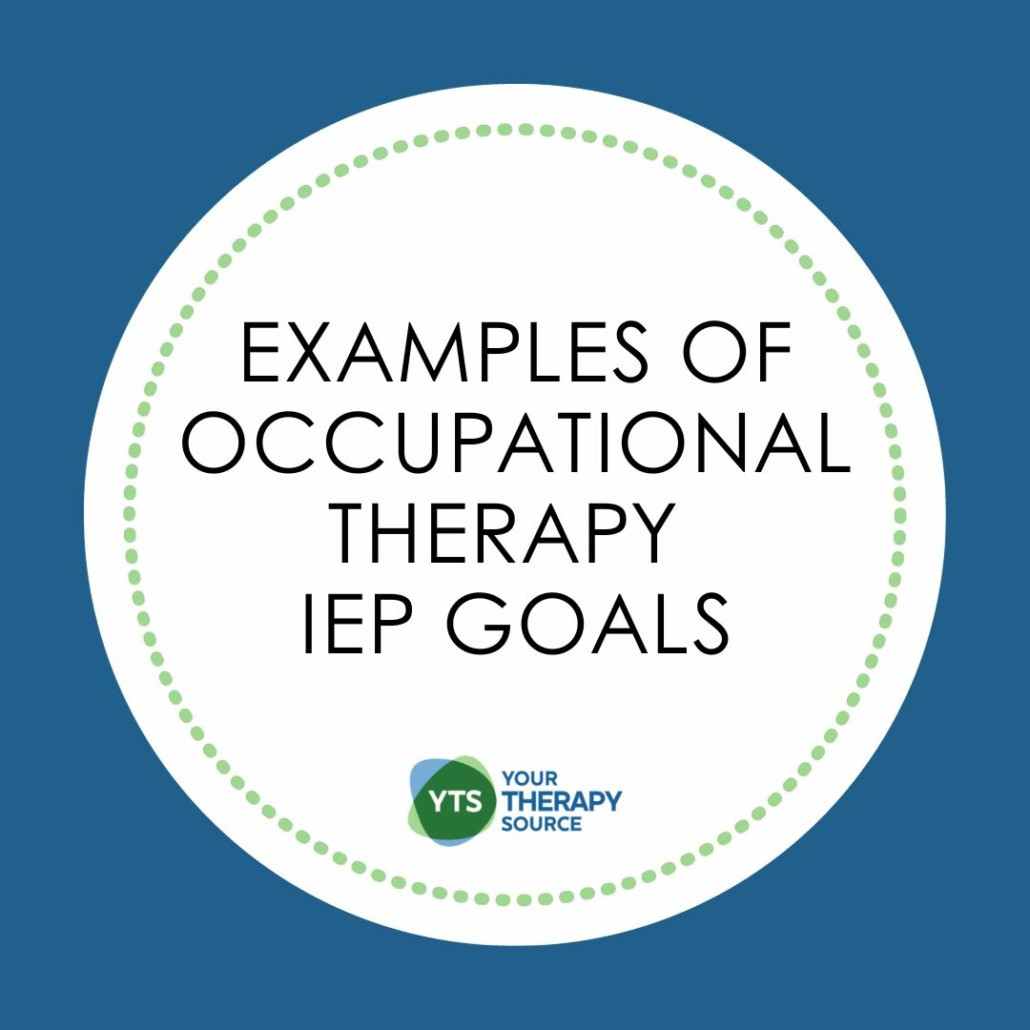Occupational Therapy IEP Goals
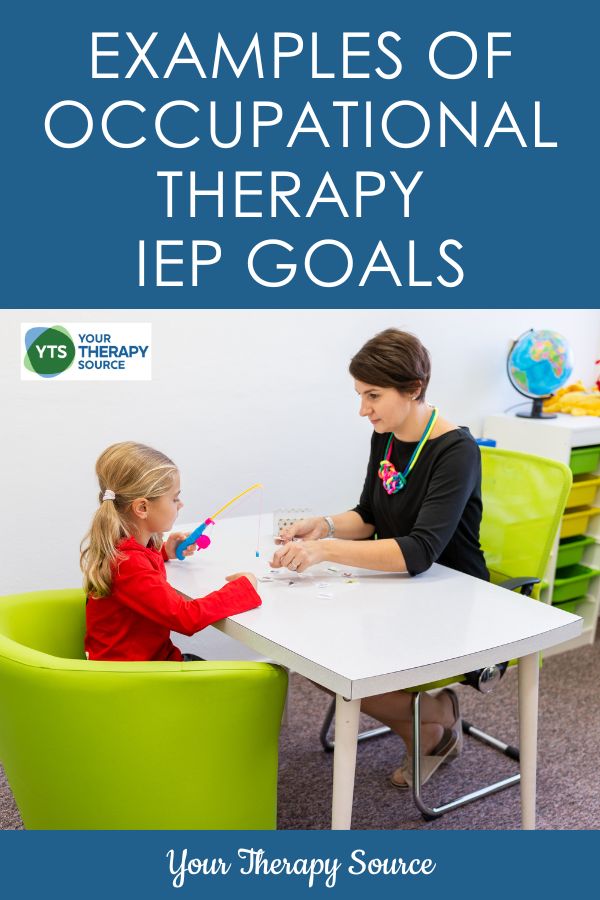
Occupational therapists (OTs) in the school setting are instrumental in helping students maximize their potential and participate fully in their educational environment. They develop specialized Occupational Therapy IEP Goals, keeping in mind the student’s individual needs. Drawing inspiration from the SMART goals structure outlined on Your Therapy Source, goal writing is an important step for a student’s IEP.
The Duality of Occupational Therapy IEP Goals
In some districts, occupational therapists (OTs) write collaborative goals in tandem with the entire IEP team, including speech-language pathologists, physical therapists, and the classroom teacher. This strategy ensures a holistic approach to the student’s education program. On the other hand, there are cases where OTs pen stand-alone OT IEP goals, which focus solely on areas directly impacted by occupational therapy. Both methodologies have their merits and are contingent upon the educational environment, the student’s individual needs, and district preferences.
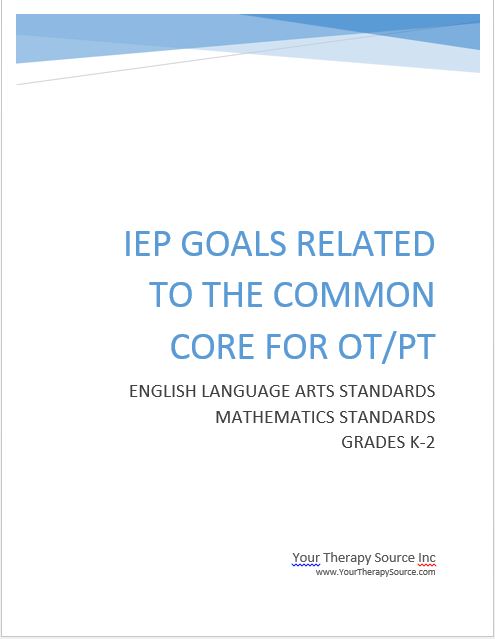
IEP Goals Related to the Common Core for OT/PT
The Science Behind Occupational Therapy IEP Goals
Writing a measurable goal involves the integration of data collection and the understanding of the student’s strengths, weaknesses, and meaningful progress. Whether you are writing collaborative goals or stand-alone goals, every OT goal should be SMART: Specific, Measurable, Achievable, Relevant, and Time-bound.
Review the Role of Occupational Therapy in the Schools
Occupational therapists (OTs) in school settings play a crucial role in helping students access the school environment and participate to their fullest in educational activities. Here’s a general breakdown of areas that OTs may focus on within the school context:
- Fine Motor Skills: OTs help students develop and refine the skills necessary for tasks such as writing, cutting, and manipulating small objects. This includes:
- Improving hand strength.
- Holding writing utensils.
- Practicing finger dexterity
- Gross Motor Skills: Though typically associated with physical therapists, OTs also support skills like:
- Bilateral coordination (using both sides of the body together).
- Postural control and stability.
- Visual-Motor and Visual-Perceptual Skills: These skills are crucial for reading, writing, and copying information. OTs work on:
- Handwriting
- Visual discrimination (spotting differences and similarities).
- Visual memory (recalling visual information).
- Self-Care or Activities of Daily Living (ADLs): OTs work on skills related to self-care, functional skills, such as:
- Buttoning and zipping clothes.
- Tying shoes.
- Managing lunchtime tasks like opening food containers.
- Sensory Processing: For students with sensory processing challenges, OTs help with:
- Developing sensory diets (specific activities tailored to help the child’s sensory needs).
- Implementing sensory breaks.
- Recommending adaptive equipment, like weighted vests or fidget tools.
- Executive Functioning Skills: OTs support students in areas such as:
- Organizing materials.
- Time management.
- Task initiation and completion.
- Problem-solving.
- Social-Emotional Skills: OTs may also support students in:
- Understanding social cues.
- Navigating group dynamics in the playground or classroom.
- Self-regulation and emotional control.
- Adaptive Technology: OTs recommend and train students in the use of assistive technology, such as:
- Software for writing support.
- Adaptive keyboards or mice.
- Communication devices.
- Environmental Modifications: Recommending changes in the school environment to support students’ needs, such as:
- Alternative seating arrangements.
- Soundproofing or creating quiet zones.
- Adjusting lighting.
- Transition Skills: As students approach graduation, OTs support skills related to:
- Job readiness.
- Organizational skills for higher education.
- Life skills like cooking or public transportation navigation.
- Collaboration with School Staff: OTs work closely with teachers, paraprofessionals, and other school staff to:
- Modify curriculum.
- Recommend classroom strategies.
- Adjust students’ routines to best support their success.
Examples of Occupational Therapy IEP Goal
Here are some examples of possible OT IEP goals to provide ideas. Remember each student needs personalized goals for their learning journey.
Fine Motor Skills IEP Goals
OTs enhance fine motor skills that directly impact daily school activities such as writing and using classroom tools.
a) In six weeks, the student will demonstrate an ability to use a tripod grasp to write their name legibly in 4 out of 5 attempts, with minimal verbal cues.
b) In two months, using a proper grip, the student will cut simple shapes with smooth edges, achieving success in 90% of classroom activities.
c) By the semester’s end, the student will assemble a 10-piece puzzle within 10 minutes.
Read more Fine Motor IEP goals here.
Gross Motor Skill IEP Goals
These are vital for overall school participation, and often overlap with skills that physical therapists focus on.
a) In eight weeks, the student will catch a ball using both hands in 8 out of 10 gym class attempts.
b) Throughout the semester, the student will maintain a seated position during story time for at least 30 minutes without leaning or slouching.
c) In three months, the student will safely navigate classroom transitions, avoiding physical obstacles in 9 out of 10 movements.
Visual-Motor and Visual-Perceptual IEP Goals
These skills directly impact a student’s ability to interpret visual information and coordinate it with motor movements.
a) By the end of the term, the student will copy a provided sentence with 85% letter accuracy.
b) Over nine weeks, the student will match similar shapes in classroom activities with 90% accuracy.
c) In six weeks, the student will reproduce a sequence of five drawn objects in the correct order.
Self-Care or ADLs IEP Goals
An essential aspect of a student’s day, these skills can greatly affect confidence and independence.
a) Within a month, the student will button their own shirt in under 5 minutes before PE class.
b) By the end of the first semester, the student will tie their shoes in under 3 minutes before recess.
c) In two months, the student will independently open their lunch items in 9 out of 10 lunch sessions.
Sensory Processing IEP Goals
OTs utilize sensory strategies to help students with sensory challenges navigate their school environment.
a) Within six weeks, after utilizing a sensory break, the student will return to class and refocus on the task at hand in under 5 minutes in 80% of instances.
b) Over a semester, using tools like fidgets, the student will remain seated during instructional periods for 25 continuous minutes in 85% of sessions.
c) In two months, the student will wear noise-canceling headphones and report a decreased sensory overload in 7 out of 10 noisy environments.
Read more about IEP goals related to sensory processing here.
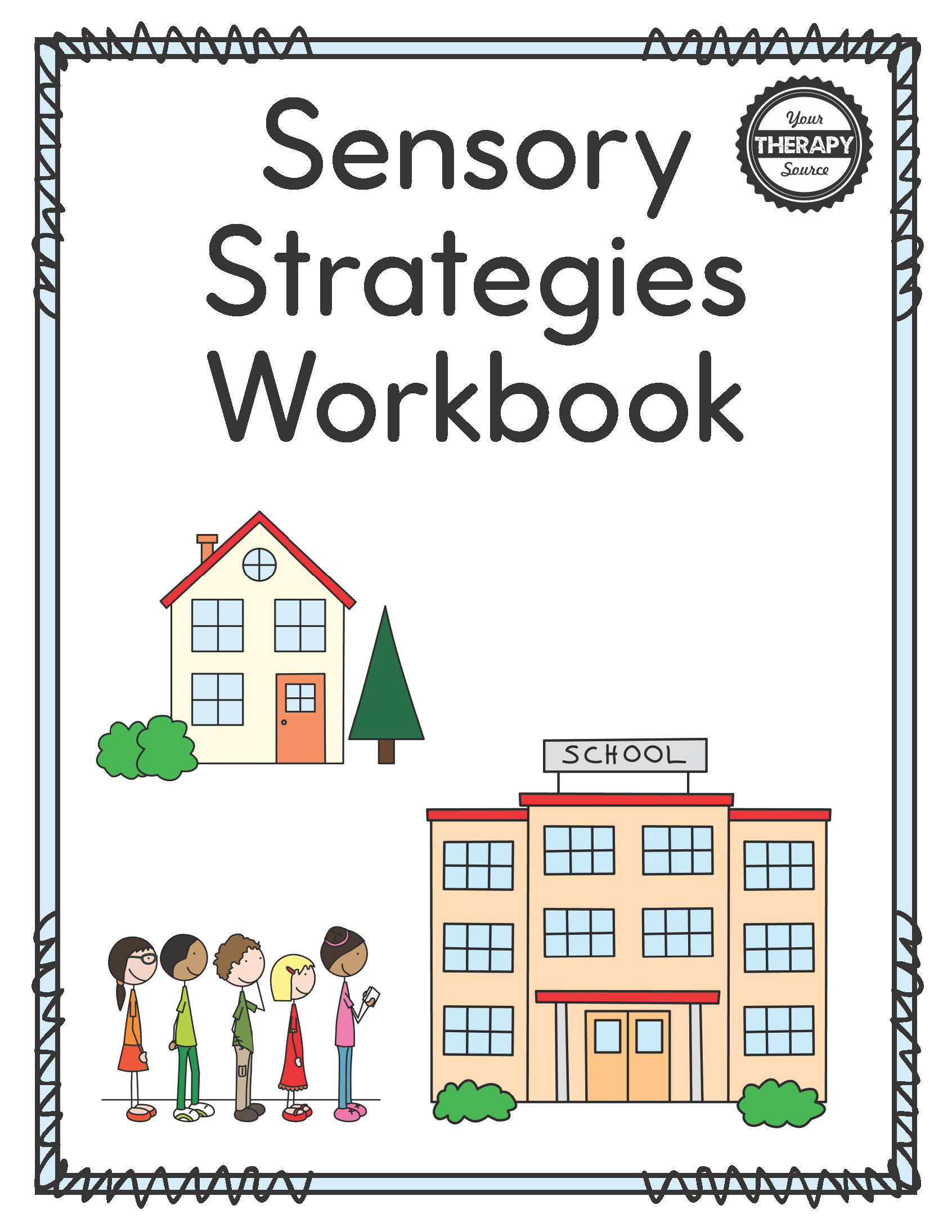
Sensory Strategies Workbook
Executive Functioning Skills IEP Goals
For more insights on these skills, this article is a great resource.
a) By the end of the quarter, the student will utilize a planner to track and submit 85% of assignments on time.
b) Within nine weeks, the student will initiate and complete a two-step classroom task in 8 out of 10 instances without prompts.
c) Over six weeks, the student will raise their hand and wait to be called upon before speaking in 8 out of 10 classroom discussions.
Social-Emotional Skills
Skills that are vital for social interactions and self-regulation. Learn more here.
a) In three months, using visual cues or verbal prompts, the student will acknowledge peers’ greetings in 7 out of 10 social interactions.
b) Over eight weeks, the student will ask for a break using a calm voice in 9 out of 10 overwhelming situations.
c) Within a semester, the student will participate in group projects and share materials with peers in 4 out of 5 group tasks.
Assistive Technology IEP Goals
This is crucial for students with varied needs to access the curriculum.
a) By the end of the term, the student will type a one-page assignment using adaptive software with fewer than five errors.
b) In two months, the student will access and read an e-book, using a screen reader, completing three chapter reviews with 80% comprehension.
c) Over six weeks, the student will communicate using a speech-generating device in 6 out of 10 classroom discussions.
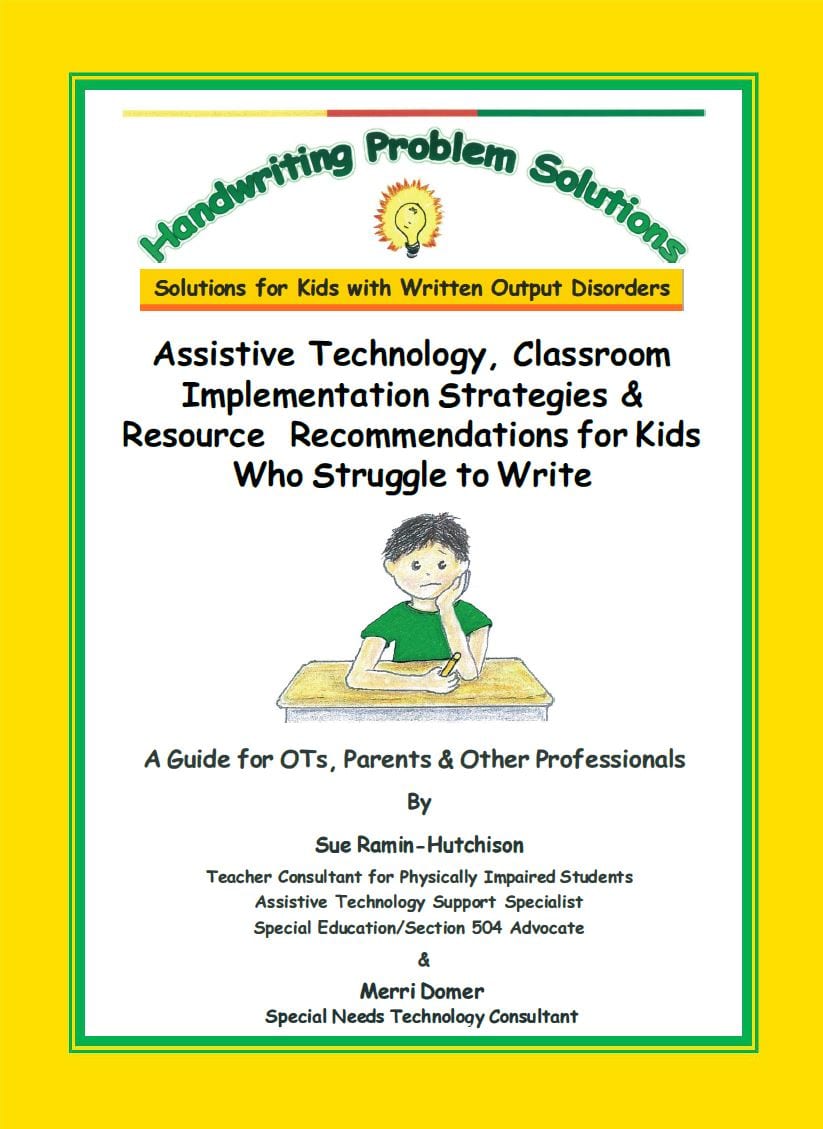
Assistive Technology, Classroom Implementation Strategies & Resource Recommendations for Kids Who Struggle to Write
Environmental Modifications
The school environment plays a pivotal role in a student’s ability to learn.
a) Within three months, using alternative seating, the student will remain on task for 20 continuous minutes in 70% of classroom activities.
b) Over the semester, in a designated quiet zone, the student will complete independent tasks with 90% accuracy.
c) By the term’s end, using adjusted lighting, the student will read and answer comprehension questions with 85% accuracy.
Transition Skills
Preparing students for life after school, OTs focus on real-world skills. Dive deeper here.
a) By the end of the year, the student will create a resume and successfully participate in two mock interviews.
b) In six months, the student will organize and manage a personal schedule, attending three different after-school activities on time.
c) Over nine months, the student will utilize public transportation independently to travel to two different local destinations.
Occupational Therapy IEP Goals & Collaborative Efforts
Data from treatment sessions, teacher reports, and classroom observations collectively help in refining these goals. Collaborative efforts ensure that every goal directly addresses the student’s individual needs, making it relevant and achievable. The IEP team, including the school-based therapist and other relevant school staff, plays a crucial role in this journey.
As you navigate the path of goal writing and data point collection, remember the importance of the student’s overall development. Whether it’s a self-regulation IEP goal or one focusing on fine motor skills, the essence remains: to foster growth, independence, and a joyful learning experience in the school setting.
In essence, OTs in schools work holistically, striving for the comprehensive development of students. By ensuring that the Occupational Therapy IEP Goals are relevant, measurable, and tailored, they enable students to thrive in their academic and daily lives.
